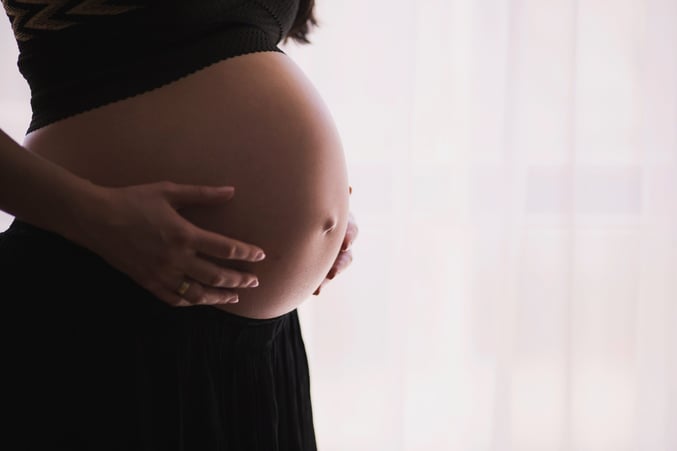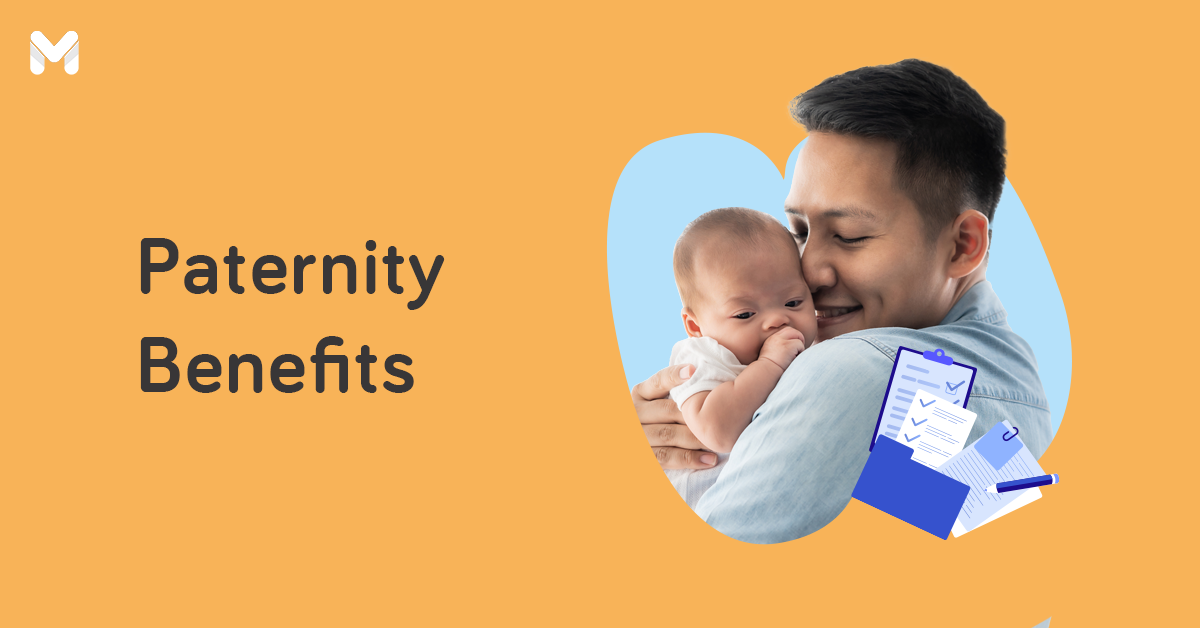Amid the economic uncertainty of the past few months, more and more Filipino women still choose to become mothers. The average number of babies born every day in the Philippines is 7,487, which is around 311 live births per hour.[1] This number contributes to the 115+ million total population of the country (as of September 2023) and composes 1.42% of the world population.[2]
At present, the government continues to assist Filipino mothers through SSS and PhilHealth maternity benefits. The 60-day maternity leave period has also been increased to 105 days because of the Expanded Maternity Leave Law.[3]
In this article, learn more about SSS and PhilHealth maternity benefits and other forms of assistance that expectant mothers can receive from the government.
SSS and PhilHealth Maternity Benefits in the Philippines vs Other Countries
Here are the top five countries with the best maternity leave benefits in the world:[4]
- Bulgaria - 58.6 weeks at 90% of the woman's previous full-time salary
- Greece - 43 weeks at 65.1% of pay
- United Kingdom - 39 weeks at 29.5% of pay
- Slovakia - 34 weeks at 75% of pay
- Croatia - 30 weeks at 100% pay
Compared to these countries, the Philippines offers up to 15 weeks of paid maternity leaves. However, the number of days is not the only factor that puts these countries at the top.
The Philippines lags behind in terms of child health interventions, medical facilities, and economic status. Still, through initiatives such as the SSS and PhilHealth maternity benefits and the Pantawid Pamilyang Pilipino Program (4Ps), the government makes an effort to address the health and nutrition needs of the poorest households with children and pregnant women.
SSS Maternity Benefits Guide
As a paying member of SSS and PhilHealth, it's important to learn what your maternity benefits are, how they work, and how you can avail of them. Here's what you need to know:
🍼 What is SSS Maternity Benefit?
This maternity benefit granted by the SSS[5] is a daily cash allowance for covered female members who cannot work due to childbirth, miscarriage, or emergency termination of pregnancy (including stillbirth).
🍼 SSS Maternity Benefits Eligibility

Who can receive SSS maternity benefits in the Philippines? Female private employees, government employees, self-employed individuals, and national athletes covered by the SSS can avail of maternity benefits upon meeting the following requirements:
- For private employees and self-employed women: At least three posted monthly SSS contributions within 12 months immediately before the semester of delivery, miscarriage, or emergency termination of pregnancy.
- Notification and proof of pregnancy (ultrasound report, medical certificate, or pregnancy test stick) sent to the employer (for private workers), head of the agency (for government workers), or directly to the SSS through the My.SSS portal or SSS Mobile App (for OFW, self-employed, and unemployed members)
🍼 SSS Benefits Under the Expanded Maternity Leave Law
Paid Maternity Leave
Under the Expanded Maternity Leave Law (Republic Act 11210),[6] the SSS pays qualified SSS members a cash benefit equivalent to 100% of their average daily salary credit. (See the SSS maternity benefits computation in the next section).
The paid leave lasts for up to a certain number of days as specified by the law:
- 105 days for live childbirth, regardless if it's a normal or cesarean delivery
- 120 days for single mothers who are giving birth (105 days plus additional 15 days)
- 60 days for women who had a miscarriage or emergency termination of pregnancy
Before the Expanded Maternity Leave Law was passed, the SSS granted only 60 days of paid leave for normal delivery and 78 days of paid leave for caesarian delivery. The extended maternity leave duration gives mothers a longer time to prepare for childbirth, recover after giving birth, and take care of their newborns.
Your employer may provide longer maternity leaves beyond what the law mandates. Check your employment contract and collective bargaining agreement (CBA) or ask your HR department about it.
Another change imposed by the new maternity leave law is that there's no limit to the number of covered pregnancies. Regardless of how often you get pregnant, you'll receive maternity benefits from the SSS each time you give birth or have a miscarriage/stillbirth. Previously, the granting of SSS maternity benefits was limited to the first four child deliveries or miscarriages.
While on maternity break, make your bonding moments with your newborn matter. Here are some lullabies you can play and hum along to put your baby to sleep.
Optional Maternity Leave Extension
On top of the mandatory 105 days of paid leave, SSS members who gave birth may choose to extend their maternity leave for 30 additional days without pay. You can avail of the maternity leave extension as long as you notify your employer in writing at least 45 days before the end of your maternity leave.
Optional Allocation of Maternity Leave to the Child's Father
You also have the option to transfer seven days of your paid maternity leave to the baby's father, whether you're married to him or not. This applies only to cases of live childbirth.
If the child's father is deceased, missing, or incapable of childcare, you can allocate the seven-day leave credits to a relative or your current partner you're living with, regardless of gender identity.
If you're availing of the optional maternity leave allocation, you should notify your employer about it. The father or alternate caregiver who will receive the allocated leave credits must notify their employer as well.
Read more: Paternity Benefits in the Philippines: Dad’s Guide to Paternity Leave
🍼 How Much is the Maternity Benefit in SSS for 2023?
Eligible SSS members may receive maternity benefits of up to ₱80,000. The maximum benefit applies to members with a monthly salary credit (MSC) of ₱20,000 (those earning ₱19,750 and above per month).
If you want to know how much you'll receive, here's the formula for SSS maternity benefits computation:
SSS Maternity Benefit Computation 2023
Total amount of SSS maternity benefit = (Average monthly salary credit ÷ 180) x Number of paid leave days
Using the formula above, here’s how to compute your SSS maternity benefits. If you want to know how much the SSS maternity benefit is for voluntary members, you can use the same formula.
- Exclude the semester of delivery or miscarriage from the computation. For example, if your expected delivery date is June, exclude the period from January to June of the current year.
- Count 12 months backward starting from the month right before the semester of delivery or miscarriage. Based on the example above, the 12-month period is from January to December of the preceding year.
- Get the sum of the six highest MSCs within the 12-month period. To find your MSC, refer to the SSS contribution table.[7] For example, if your monthly salary for January to December is ₱30,000, your MSC is ₱20,000. The sum of your six highest MSCs would be ₱120,000 (₱20,000 x 6).
- Divide your average MSC by 180 days to compute your average daily salary credit (ADSC), which is equivalent to your daily maternity allowance. If your average MSC is ₱120,000, your ADSC is ₱666.67.
- Multiply your ADSC by the number of days you're taking maternity leave to get the total amount of your SSS maternity benefit. That's 105 days for normal or cesarean delivery, 120 days for solo parents, or 60 days for miscarriage, abortion, or stillbirth. Deduct seven days if you'll transfer your leave credits to the child's father or an alternate caregiver.
Sample SSS Maternity Benefit Computation

Based on the details above, here's an example of an SSS maternity computation for 2023.
- For normal/caesarian delivery: (₱120,000 ÷ 180) x 105 days = ₱70,000
- For solo parents: (₱120,000 ÷ 180) x 120 days = ₱80,000
- For miscarriage/abortion/stillbirth: (₱120,000 ÷ 180) x 60 days = ₱40,000
That's the amount you'll receive from the SSS if your salary is in the maximum MSC of ₱20,000.
Note that you should also receive your full pay for the entire duration of your maternity leave. The Expanded Maternity Leave Law requires employers to pay for the salary differential, which is the difference between their covered employees' full salary and the actual cash benefit from the SSS.
🍼 When Can I Get My SSS Maternity Benefit?
Your employer is required by law to pay your full maternity benefit within 30 days since you filed your maternity leave. The SSS will then reimburse the total amount your employer paid you. If you’re self-employed or a voluntary member, the SSS will pay the benefit directly to you.
🍼 SSS Maternity Benefit Online Application
As mandated by the Social Security Commission Resolution No. 189.s2021,[8] Filipinos can apply for maternity benefits claims online.
How to File SSS Maternity Benefit Application Online
Here’s how self-employed or voluntary members, OFWs, non-working spouses, or members separated from employment can claim SSS maternity benefits
Note: Make sure to submit your maternity notification as soon as you learn about your pregnancy so you can submit your Maternity Benefit Application (MBA) via the SSS member portal. Next, enroll your disbursement account for approval. Then proceed to the steps below:
- Log in to your My.SSS member account.
- Click Benefits under the E-services tab and select Apply for Maternity Benefit.
- Read the important reminders, then click Proceed.
- Enter the information in the required fields (Date of Delivery/Miscarriage/ETP and no. of pregnancies). Click Proceed.
- Enter the information about the type of delivery (live childbirth, miscarriage/ETP, stillbirth/fetal death).
- Tick the box for solo parent if you’re a solo parent with a valid Solo Parent ID. You can also allocate leave credits (one to seven days) to your employed spouse.
- Choose the disbursement account.
- You'll see the number of days and the estimated maternity benefit you'll receive. Attach the documentary requirement (proof of child's birth).
- Click I Certify and Submit and then OK in the pop-up window.
- You'll see a message that you've successfully submitted your MBA to SSS. Take note of your transaction number.
- You'll also receive an email notification from SSS. Wait for a few days for the result of your application via the same email you registered.
The process is the same when you apply for Adjustment of Maternity Benefit. Simply choose the corresponding tab from the E-services menu.
Important reminders:
- Make sure to upload all the required supporting documents corresponding to the type of claim you're filing. The SSS will review these.
- The claim filing will be the date of successful submission.
- Previously submitted claims that were not accepted based on the SSS evaluation may be filed again as a new online transaction once the requirements are met.
How to Confirm Advance Receipt of Maternity Benefit
To confirm that you received your maternity benefit in advance, you can either click the link in the SSS email or go to My.SSS.
- Click Here in the SSS email to access the confirmation screen or log in to your My.SSS member account.
- Select I Confirm if you received the maternity benefit from your employer.
- Click OK to continue.
- Take note of the transaction number and the date of successful confirmation.
🍼 FAQS on SSS Maternity Benefits

1. What do I need for my SSS Maternity Benefit online application?
You need to register for a My.SSS account. Also, you need to enroll in the Disbursement Account Enrollment Module (DAEM), which you can do on My.SSS, too.
2. What cases of SSS maternity benefit adjustments can be filed online?
You can file applications for adjustments using your SSS online account if you meet any of these conditions:
- You’re a qualified solo parent.
- You’ll correct the type of claim from normal to cesarean delivery or from miscarriage to ectopic pregnancy with an operation.
- Your SSS computation of maternity benefits is higher than your employer's computation.
- Additional contributions are posted.
- There is a correction in the approved number of days.
3. Can I still submit my SSS Maternity Benefit application via dropbox?
The SSS no longer accepts applications for maternity benefits over-the-counter and through dropboxes. All filings and submissions must now be made online.
4. Until when can I confirm receipt of the maternity benefit advance payment?
Members who received their maternity benefits in advance should confirm receipt within seven days from the date in the SSS email.
5. What happens if I don't receive the advance payment or confirm receipt?
The Maternity Benefit Reimbursement Adjustment (MBRA) will be canceled, and your employer will refile or re-submit it as a new application.
6. Should I be legally married to qualify for SSS maternity benefits this 2023?
The Expanded Maternity Leave Law doesn't require claimants to be married to be eligible for maternity benefits. All female workers who meet the required number of contributions can apply for SSS maternity benefits regardless of their civil status or the child's legitimacy.
Moreover, unmarried pregnant employees can also apply as Solo Parents upon submission of supporting documents.
7. How long should I wait for my SSS maternity benefits payment?
Your employer should give your maternity leave benefits payment within 30 days after filing your application. The SSS will reimburse the payment of your employer once proof of payment is submitted.
8. Can my employer terminate my employment after I avail of the 105 days of leave credits?
Those who avail of the SSS maternity benefit shall have the security of tenure (Section 15). Availing of leave credits should not be a basis for demotion or termination.
PhilHealth Maternity Benefits Guide

🍼 What is PhilHealth Maternity Benefit?
PhilHealth maternity benefits refer to social health insurance coverage that provides women about to give birth with financial access to health care before, during, and after childbirth. It consists of complete essential health care services for qualified PhilHealth members throughout their pregnancy and childbirth.
🍼 Who Can Receive PhilHealth Maternity Benefits?
All Filipinos, including dual citizens and naturalized Filipinos, have immediate eligibility[9] for PhilHealth benefits under the Universal Health Care Act.
Here are the conditions to qualify for maternity benefits for PhilHealth members who are direct contributors (employed, self-employed, professional practitioners, OFWs, dual citizens, kasambahays, and Filipinos at least 21 years old with a capacity to pay the contributions):
- Active membership with qualifying PhilHealth contributions
- Employed members: At least three posted monthly PhilHealth contributions within six months before availing of maternity benefits
- Self-employed or unemployed voluntary members: At least nine posted monthly contributions before availing of maternity benefits
- OFW and sponsored members: PhilHealth membership is within the validity period
- Have not used up the 45-day regular benefit limit
- Admitted to a PhilHealth-accredited facility for not less than 24 hours
- Attended by a PhilHealth-accredited doctor
Note: Under the Universal Healthcare Law, PhilHealth members may still avail of maternity benefits even if they don't consistently pay their monthly premiums as long as they meet the required minimum number of paid contributions.
🍼 How to File PhilHealth Maternity Benefit Application
If you’re pregnant and haven’t registered for a PhilHealth membership, you need to register before you can avail of the maternity benefits. You can do so via the PhilHealth online registration facility or a representative at any PhilHealth branch via its dropbox system.
If you wish to avail yourself of the maternity benefits on your first day of confinement, you can do so. There’s a designated PhilHealth desk at accredited hospitals and surgical clinics where you’ll be assisted with your registration. Prepare the documentary requirements in advance to facilitate a faster registration process and avoid any delays upon your discharge.
Employed members need the following PhilHealth maternity requirements this 2023:
- Valid ID/PhilHealth ID
- Member Data Record
- PhilHealth CF1 (Claim Form) and CSF (Claim Signature Form) which can be obtained through your employer with its authorized signatory
You might also be requested to provide a certification of contribution/proof of payment of contributions. From there, PhilHealth representatives can check your records online and process your maternity benefit claim.
4Ps and indigent members can coordinate with their local government units or social welfare offices to get the certification for PhilHealth enrollment or maternity benefit availment.
🍼 What are the PhilHealth Benefits for Maternity?

Under the Expanded Maternity Leave Law, PhilHealth is mandated to cover the healthcare needs of its active pregnant members and their newborns through different maternity benefit packages.
Antenatal Care Package
- Prenatal consultation
- Essential healthcare services
Maternity Care Package
- Essential health care services during the pregnancy until the mother gives birth
- Follow-up visits three to seven days after childbirth
Normal Spontaneous Delivery Package
- Essential health care services for normal, low-risk childbirth and post-delivery period
- Follow-up visits three to seven days after childbirth
Maternity Benefits for Other Types of Childbirth
PhilHealth also covers health care services for caesarian delivery and other types of delivery in accredited hospitals, such as breech extraction.
Newborn Care Package
Newborns within their first hours of life can receive the following PhilHealth benefits, regardless of the type of delivery:
- Newborn screening test
- Newborn hearing screening test
- Essential newborn care (eye prophylaxis, weighing, first dosage of hepatitis B and BCG vaccines, etc.)
Z Benefits for Premature and Small Newborns
These are benefit packages for expectant moms (24 to 36 and 6/7 weeks pregnant) who are at risk of premature delivery, as well as premature newborns (fetal age of 24 weeks to less than 37 weeks) and small babies (500g to 2,499g fetal weight).
🍼 How Much is the Maternity Benefit in PhilHealth?
PhilHealth shoulders the following child delivery costs for qualified members:
| PhilHealth Maternity Benefit | Coverage |
|---|---|
| Antenatal Care Package | ₱1,500 in PhilHealth-accredited non-hospital facilities |
| Maternity Care Package | ₱6,500 (PhilHealth-accredited hospitals) / ₱8,000 (Maternity clinics, infirmaries, birthing homes, and other accredited non-hospital facilities) |
| Normal Spontaneous Delivery Package | ₱5,000 (accredited hospitals) / ₱6,500 (accredited non-hospital facilities) |
| Maternity Benefits for Other Types of Childbirth | ₱19,000 (caesarian delivery) / ₱12,120 (vaginal delivery after C-section/breech extraction) / ₱9,700 (complicated vaginal delivery) |
| Newborn Care Package | ₱1,750 |
| Z Benefits for Premature and Small Newborns | ₱600 to ₱4,000 (prevention of premature delivery) / ₱35,000 to ₱135,000 (premature newborns with a fetal age of 24 weeks to less than 32 weeks) / ₱24,000 to ₱71,000 (premature newborns with a fetal age of 32 weeks to less than 37 weeks) |
🍼 FAQs on PhilHealth Maternity Benefits
1. How many months of contribution to avail of PhilHealth maternity benefits?
There’s no minimum number of PhilHealth contributions. But to keep enjoying PhilHealth’s health benefits and medical services, members should regularly pay their contributions. This will also ensure the fund’s sustainability for continuous development.
2. I’m a single mother. Can I still avail of PhilHealth maternity benefits?
Yes. You can avail of the maternity benefits regardless of your marital status as long as you’re a PhilHealth member.
3. If I’m an inactive PhilHealth member, can I still avail of the maternity benefits?
Yes, all Filipino citizens automatically qualify for PhilHealth benefits, including maternity benefits, under the Universal Health Care Act. But members with the financial means must keep their PhilHealth membership updated.
4. Is a second pregnancy covered by PhilHealth as well?
There’s no limit to the number of pregnancies PhilHealth covers, so yes, your second pregnancy will be covered. But from a medical standpoint, it’s recommended that you give your body enough time to recover and focus on taking care of your newborn before getting pregnant again.
5. Are miscarriages covered by PhilHealth?
Yes, PhilHealth covers the dilation and curettage (D&C) procedure for qualified members who suffered a miscarriage. PhilHealth will cover up to ₱11,000 for patients confined at Level 1, 2, and 3 hospitals and Ambulatory Surgical Clinics; ₱6,600 will go to the hospital or surgical clinic and ₱4,400 to the attending physician.
6. Can PhilHealth maternity benefits be converted to cash?
Unlike the SSS maternity benefit, PhilHealth maternity benefits are automatically deducted from your hospital bill when you get discharged. After the PhilHealth benefit is deducted, you’ll settle the remaining amount with your HMO, if any, out-of-pocket.
7. Can indigent members avail of PhilHealth’s maternity packages and benefits?
Yes. All indigents duly identified by the DSWD are automatically enrolled in and covered by PhilHealth. The female spouse is also usually designated as the primary member.
Related reading:
- 9 Ways to Maximize Your Pag-IBIG Fund Benefits
- Senior Citizen Benefits Your Parents Can Get in Your City
Final Thoughts
To ensure you get SSS and PhilHealth maternity benefits, check or update your membership status with these agencies. Ask for a Member Data Record (MDR) from PhilHealth and a Static Information Sheet from the SSS. You must also regularly check your SSS and PhilHealth contributions to confirm if your employer is remitting them.
If you need extra cash to fund any remaining hospital costs, consider getting a personal loan. Compare your options from top providers in the Philippines:
|
Provider
|
Loan Amount
|
Monthly Add-on Rate
|
Loan Term
|
Minimum Annual Income
|
Approval Time
|
|---|---|---|---|---|---|
|
UnionBank Personal Loan
|
Up to ₱2 million
|
26.9% per annum
|
12 to 60 months
|
₱250,000
|
As fast as 5 minutes
|
|
UNO Digital Bank Personal Loan
.png?width=149&height=52&name=Unobank-Logo-Colored_Horizontal-Medium%20(for%20MMX).png) |
₱10,000 to ₱500,000
|
1.79% per month (corresponds to annual contractual rates or annual percentage rates ranging from 35.78% to 37.54%)
|
Six to 36 months
|
₱240,000
|
Five to seven banking days
|
|
Metrobank Personal Loan
|
₱20,000 to ₱2 million
|
1.25% to 1.75%
|
36 months
|
₱350,000
|
Seven banking days
|
|
BPI Personal Loan
 |
₱20,000 to ₱3 million
|
Maximum annual contractual rate of 28.67%
|
12 to 36 months
|
Inquire with BPI
|
Five to seven banking days
|
|
Tonik Credit Builder
 |
₱5,000 to ₱20,000
|
4.84%
|
Six to 12 months
|
Inquire with Tonik
|
Two banking days
|
|
Tala

|
₱1,000 to ₱25,000
|
0.43% daily
|
Up to 61 days
|
None
|
Five minutes to 24 hours
|
|
HSBC Personal Loan
|
₱30,000 to ₱500,000
|
0.65%
|
Six to 36 months
|
₱168,000
|
Five to seven banking days
|
|
CIMB Personal Loan
|
₱30,000 to ₱1 million
|
As low as 0.83%
|
12 to 60 months
|
₱180,000
|
One to two banking days
|
|
Maybank Personal Loan
|
Up to ₱1 million
|
1.3%
|
Up to 36 months
|
₱300,000
|
Inquire with Maybank
|
|
RCBC Bank Personal Loan
 |
₱50,000 to ₱1 million
|
1.3%
|
Six to 36 months
|
₱360,000
|
5 to 7 banking days
|
|
PSBank Personal Loan
 |
₱20,000 to ₱250,000
|
|
24 or 36 months
|
₱180,000
|
Five to nine banking days
|
Sources:
- [1] Philippine Population (Countrymeters, 2023)
- [2] World Population (Countrymeters, 2023)
- [3] Implementing Rules and Regulations of Republic Act No. 11210
- [4] Here's what paid maternity leave looks like around the world (Insider, 2023)
- [5] SSS Maternity Benefits
- [6] 105-Day Expanded Maternity Leave Law
- [7] SSS Contribution Table
- [8] Online Filing of Maternity Benefit Application
- [9] Granting of Immediate Eligibility to Filipino Citizens









